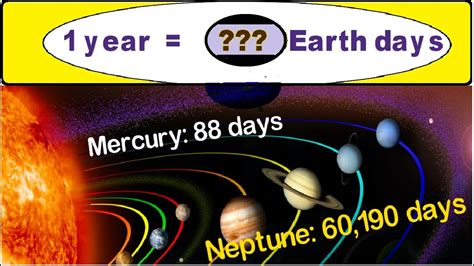How Long Would It Take To Drive To The Sun
Arias News
Mar 31, 2025 · 4 min read

Table of Contents
How Long Would It Take to Drive to the Sun? A Journey Beyond Imagination
The sun. A celestial behemoth, the star at the center of our solar system, providing life-giving warmth and light. But how long would it actually take to drive there? The question, while seemingly absurd, opens the door to a fascinating exploration of physics, astronomy, and the sheer scale of the cosmos. The short answer? You can't drive to the sun. But let's delve into the "why" and explore the fascinating complexities this seemingly simple question unveils.
The Impossibility of the Drive: Facing the Reality
Before we even begin to calculate travel times, we must acknowledge the fundamental impossibility of the task. Driving, by its very definition, implies the use of a terrestrial vehicle, relying on roads and a breathable atmosphere. Neither of these exist between Earth and the sun.
The Sun's Extreme Environment: A Hostile Journey
The space between Earth and the sun is not a friendly environment for human life or any conventional vehicle. Let's consider some of the insurmountable obstacles:
-
Extreme Temperatures: Long before reaching the sun's surface, the intense heat would melt any terrestrial vehicle. Temperatures in the lower corona, the sun's outer atmosphere, reach millions of degrees Celsius. Even approaching the sun's vicinity would be catastrophic.
-
Vacuum of Space: The absence of air pressure would cause immediate and catastrophic damage to any vehicle. The lack of oxygen would also render life support systems necessary, adding another layer of complexity.
-
Solar Radiation: The sun emits a constant stream of charged particles and radiation, known as the solar wind. This high-energy radiation would bombard any spacecraft, causing severe damage to electronics and posing an extreme threat to human health.
-
Lack of Roads: This one might seem obvious, but it's important to reiterate. There are no roads in space! Driving implies a physical roadway, and no such infrastructure exists beyond Earth.
Hypothetical Calculation: Ignoring Reality for the Sake of Science
While physically impossible, let's engage in a thought experiment. Let's assume, for the sake of argument, that we possess a vehicle capable of withstanding the extreme temperatures, radiation, and vacuum of space. This vehicle also magically bypasses the lack of a roadway.
Calculating the Distance: A Vast Astronomical Scale
The average distance between the Earth and the sun is approximately 93 million miles (149.6 million kilometers), a figure known as one astronomical unit (AU).
Determining Speed: A Question of Feasibility
Let's assume our hypothetical vehicle maintains a constant speed of 70 miles per hour (112 kilometers per hour), a typical highway speed limit.
The Calculation: Years of Uninterrupted Travel
To calculate the travel time, we would divide the distance by the speed:
(93,000,000 miles) / (70 miles/hour) ≈ 1,328,571 hours
Converting hours to days and then years:
1,328,571 hours / 24 hours/day ≈ 55,357 days
55,357 days / 365 days/year ≈ 151.6 years
Therefore, at a constant speed of 70 mph, it would hypothetically take approximately 151.6 years to drive to the sun. This is, of course, ignoring any factors like acceleration, deceleration, fuel consumption (which would be astronomical even in a hypothetical scenario), and the aforementioned existential threats of space travel.
Exploring the Concepts: Bridging Science and Imagination
This thought experiment highlights the vast scale of our solar system and the limitations of human technology in the face of cosmic distances. While we can't drive to the sun, the calculation underscores several key concepts:
-
The immensity of space: The sheer distance to the sun demonstrates the extraordinary scale of the universe.
-
The power of scientific calculation: Even though the scenario is unrealistic, calculating travel time illustrates basic principles of physics.
-
The limits of current technology: The exercise highlights the technological challenges of interstellar travel.
Alternative Modes of Travel: Beyond Driving
While driving to the sun is impossible, we can explore other hypothetical modes of transportation:
Spacecraft: A More Realistic Approach
Spacecrafts, unlike terrestrial vehicles, are designed to operate in the vacuum of space. However, even with advanced spacecraft, reaching the sun presents significant challenges due to the extreme temperatures and solar radiation. Missions to the sun, such as the Parker Solar Probe, utilize highly specialized heat shields and trajectories to minimize exposure to the most extreme conditions.
Faster-than-Light Travel: Science Fiction's Influence
Faster-than-light (FTL) travel is a staple of science fiction, but it currently remains a theoretical concept. Einstein's theory of relativity suggests that exceeding the speed of light is impossible, making FTL travel a subject of ongoing debate and speculation.
Conclusion: A Journey of the Mind
Driving to the sun remains an impossibility, a fun thought experiment that illustrates the vastness of space and the limitations of current technology. While the journey itself is out of reach, the questions it raises serve as a gateway to explore the exciting realms of astrophysics, cosmology, and the boundless wonders of the universe. The seemingly simple question opens up fascinating avenues for learning and wonder. So, while you can't physically drive to the sun, the journey of the imagination is a journey well worth undertaking.
Latest Posts
Latest Posts
-
What Number Is 24 Percent Of 75
Apr 02, 2025
-
What Does Ya Ya Mean In Greek
Apr 02, 2025
-
Which Is Longer A Yard Or A Meter
Apr 02, 2025
-
How Many Minutes Are In 540 Seconds
Apr 02, 2025
-
How Many Pints In A Pound Of Tomatoes
Apr 02, 2025
Related Post
Thank you for visiting our website which covers about How Long Would It Take To Drive To The Sun . We hope the information provided has been useful to you. Feel free to contact us if you have any questions or need further assistance. See you next time and don't miss to bookmark.
